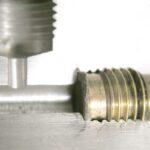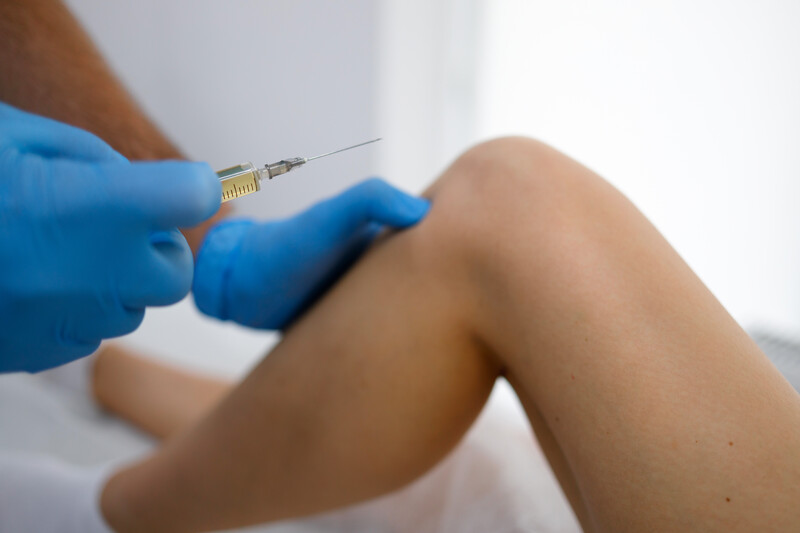The C-shaped cartilage structure in your knee joint is called the Meniscus. It helps to –
- Maintain joint stability
- Cushioning
- Load distribution
However, meniscus tears are a common orthopaedic injury that can lead to –
- Pain
- Swelling
- Limited mobility
Traditional meniscus tear treatment involves rest, physiotherapy, and, sometimes, surgical intervention. Platelet-rich plasma (PRP) therapy has shown its potential as a promising non-surgical treatment option for treating various orthopaedic conditions, including meniscus tears.
Understanding PRP Therapy
PRP (Platelet-rich plasma) therapy is a non-surgical treatment that involves using a patient’s blood to promote healing and regeneration of injured or damaged tissues. During PRP therapy –
- A small amount of the patient’s blood is drawn and placed in a specialized tube.
- The tube is positioned in the centrifuge device to separate the red blood cells, white blood cells, and platelets.
- The result is a concentrated solution of platelets and growth factors, known as PRP.
- The PRP solution is injected into the site of injury or damage, where it can help to stimulate healing and regeneration.
Affordable and high-quality PRP tubes bought from Plasmolifitng World ensure the PRP preparation’s quality, consistency, and sterility. The healthcare company has been offering medical-grade devices for two decades. Give them a try!
PRP Therapy for Meniscus Tears
1. Anti-inflammatory Effects:
Inflammation is a typical response to injury and can aggravate pain and tissue damage. PRP decreases the inflammation by –
- Inhibiting the release of pro-inflammatory substances
- Reduce pain significantly
- Create a favourable environment for healing
2. Enhanced Tissue Repair:
The growth factors present in PRP can promote tissue repair and regeneration. These growth factors –
- Stimulate the production of stem cells, which can differentiate into various cell types, including chondrocytes, the cells responsible for cartilage formation.
- This regenerative process contributes to meniscus tissue healing and regeneration.
3. Pain Reduction:
Meniscus tears often cause pain and discomfort. PRP therapy has revealed its potential to reduce pain by targeting the underlying causes of distress. PRP provides substantial pain relief to people with meniscus tear by –
- Reducing inflammation
- Promoting tissue healing
- Stimulating the release of endogenous pain-relieving substances
Challenges and Limitations
While PRP therapy holds promise for meniscus tear healing, it is essential to acknowledge its limitations and challenges:
1. Lack of Standardization:
PRP preparation methods differ among practitioners. It leads to irregularities in the concentration of platelets and growth factors in the injected solution. Standardization of PRP protocols is necessary to ensure reliable and reproducible results.
2. Variable Outcomes:
The effectiveness of PRP therapy for meniscus tears may vary among individuals. Tear size, location, patient age, and overall health can influence treatment outcomes.
3. Limited Long-Term Data:
While short-term pain relief and improved function are often reported, more research is needed to confirm its long-term ben
efits.
4. Not Suitable for All Cases:
Severe meniscus tears or tears in specific locations may not respond as effectively to PRP therapy. Surgical interventions may be the only solution in such cases.
Conclusion
In the ever-evolving field of orthopaedics, PRP therapy represents an exciting development that can accelerate meniscus tear healing and improve the quality of life for those affected by this common knee injury.
 Mastering Online Masterclasses: Choosing the Right Online Violin Instructors
Mastering Online Masterclasses: Choosing the Right Online Violin Instructors  Empowering Healthcare Professionals: How WT Farley Oxygen Regulators Enhance Patient Care
Empowering Healthcare Professionals: How WT Farley Oxygen Regulators Enhance Patient Care  Elevate Your Collection: Unveiling the Beauty of Custom Wine Cellars in Ottawa
Elevate Your Collection: Unveiling the Beauty of Custom Wine Cellars in Ottawa  Enhancing Your Online Presence with Real Estate SEO Services
Enhancing Your Online Presence with Real Estate SEO Services  The Epitome of Luxury: Elevating Spaces with Imperial High-End Kitchen Cabinets
The Epitome of Luxury: Elevating Spaces with Imperial High-End Kitchen Cabinets  Pokémon go accounts- Exploring the reasons behind player demand
Pokémon go accounts- Exploring the reasons behind player demand  Pokemon go shortcut to greatness – Buy now
Pokemon go shortcut to greatness – Buy now  Online slot games for classic fruit machine lovers
Online slot games for classic fruit machine lovers  Ensuring Security In Online Fund Transfers: Understanding Fraud Prevention And Risk Mitigation
Ensuring Security In Online Fund Transfers: Understanding Fraud Prevention And Risk Mitigation 




